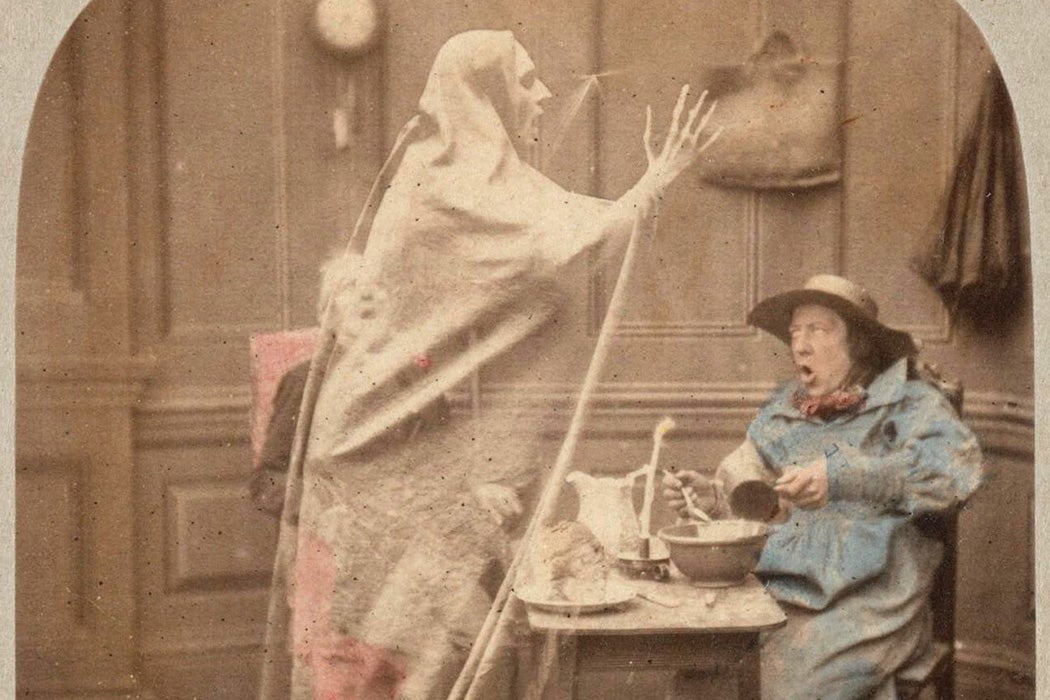Realism was exceptionally well suited (heh) for elaborate descriptions of spectral clothing.

Victorian ghosts dressed better than their ancestors. Gone were the traditional white linen, the funeral shrouds, the clanking fetters. In the nineteenth century, according to those purportedly in the know—spiritualists, spirit photographers (yes, they claimed they could photograph ghosts), and, above all, writers of spooky stories—ghosts manifested themselves in the latest fashions.
Scholar Aviva Briefel argues that the Victorian fascination with the immaterial was also very much an obsession with the material commodities that defined the living. It all showed up in the conventions of literary realism, which depended on thick descriptions of the stuff of the material world.
“The complex interactions between intangible spectres [sic] and concrete clothing became a rich site of inquiry in the nineteenth-century ghost story, a genre that was deeply informed by realist conventions despite its supernatural subject matter,” writes Briefel.
For Victorian writers, clothes made the ghost. As in the detective story, what a spirit was wearing was a clue to its identity: ghosts were recognized by their wardrobe. After all, in the words of a fictional character of 1866, a ghost is “hollow, and got no teeth, no bones, no hair… a sort of nothing without innards.”

In H.G. Wells’s The Invisible Man (1897), the protagonist, essentially a ghost, can only manifest himself through costume. He needs, writes Briefel, “things to conceal his vacuity.” Or, as a character in the novel says, “Why! …that’s not a man at all. It’s just empty clothes.”
In Charles Dickens’s A Christmas Carol (1843), Jacob Marley’s translucent ghost is only given substance by his “waistcoat, tights, and boots.” When this apparition starts to unwrap the bandages on his head, his jaw simply falls away. He’s literally held together by fabric.
Victorians left very few bits of the body exposed, so it should not surprise that they enjoyed ghost stories in which the “spectre goes after clothes to protect its decency.” A naked ghost could disrupt morals and the conventions of literary realism.
Skeptics and parodists had fun with all this, wondering if clothing itself was ghostly and made by ghost tailors and ghost cobblers. In Henry James’s “The Romance of Certain Old Clothes” (1868), a ghost returns to kill her own sister to protect her wardrobe.
No comments:
Post a Comment